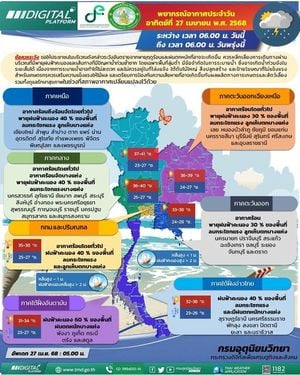The Bali Nine case continues to evoke strong emotions and intense discussions within Australia and beyond, marking it as one of the most notorious drug trafficking incidents to involve Australian nationals. The saga began back in 2005 when nine Australians were apprehended by Indonesian authorities for attempting to smuggle heroin from Bali to Australia. The bond among these individuals was tenuous at best, with many of them not even knowing each other prior to their ill-fated venture.
This group consisted of nine very different characters, each with distinct backgrounds and motivations for their involvement. The heart of the story rests on Andrew Chan and Myuran Sukumaran, who emerged as the prominent figures during the trial. Chan, then just 22, played the role of organizer and ringleader of the smuggling operation. He was caught at Denpasar airport with several kilos of heroin hidden within the suitcase. Chan later found solace and redemption within the confines of prison walls, embracing Christianity and going on to marry his fiancée shortly before his execution by firing squad on April 29, 2015, all the mientras singing songs of worship.
Myuran Sukumaran, also regarded as the co-ringleader, faced similar fate. His 2006 death sentence was resisted through various appeals but to no avail. Even behind bars, he refused to be defined solely by his past; instead, he turned his talents toward art, becoming a prolific painter whose works served as poignant reflections on his reality and the nuance of Indonesian culture. Sukumaran was executed alongside Chan, igniting debates around the death penalty and the ethics of drug trafficking.
Among the group was Tan Duc Thanh Nguyen, who was initially sentenced to life imprisonment but saw his sentence fluctuate due to various appeals and legal contradictions. Struggling with health issues, he sadly succumbed to kidney cancer at the age of 34. Then there was Renae Lawrence—the only woman among the group. Arrested with 2.7 kilograms of heroin strapped to her body, she was sentenced to life but later had her term reduced significantly. After serving around 13 years, she returned to Australia, advocating for her remaining peers to receive reduced sentences.
Si-Yi Chen entered detention at the young age of 20 after being found guilty of drug trafficking. His sentence also saw alterations, including a period when prosecutors sought the death penalty against him. Later, he shifted his focus to helping other inmates by running educational workshops within prison.
Michael Czugaj and Matthew Norman, the youngest members, faced long sentences and complex legal tussles. Czugaj encountered life imprisonment after attempting to smuggle 1.75 kilograms of heroin, whereas Norman, who was barely old enough to be considered an adult at the time of his arrest, was initially sentenced to death before several judicial changes altered his fate as well.
Throughout the trials and their ensuing sentences, the media's intense focus has highlighted the social and moral dilemmas surrounding drug use and trafficking, especially when involving young individuals whose life paths could have taken drastically different trajectories. Post-execution, many have reflected upon the harsh realities surrounding the decisions made by the Bali Nine. The case has reverberated deeply within Australian society, raising questions about justice, rehabilitation, and the effectiveness of severe drug laws.
More recently, the remaining members of the Bali Nine are grappling with their situations as they attempt to navigate their lives behind bars. Reports suggest there are discussions about the potential for their return to Australia, especially following interventions by Australian Prime Minister Anthony Albanese and deals struck during international summits. These developments fueled widespread media coverage, leaving many to ponder the future of these individuals who once stood at the center of such a tragic episode.
Madonna King, author of the bestselling book about the Bali Nine, has articulated her views on the war on drugs and the role of cross-border policing, bringing additional narratives to light about the individuals involved. King emphasized how “Every single one of them wanted to find this sense of belonging,” shedding light on the very human aspects of their decisions and the pressures surrounding their lives before the arrests. While two of them paid the ultimate price, the rest remain as poignant reminders of the tragic consequences associated with drug trafficking.
The Bali Nine story is more than just about crime; it provokes thoughts about the nature of punishment, the justice system, and how society deals with addiction and desperation. These complex themes resonate widely, making the Bali Nine case not only significant within the realms of law enforcement and criminal justice but also important for the general public's discourse on morality and human rights. The future of the remaining members remains uncertain, but as discussions continue at various levels of government, families, advocates, and communities keep watch over the developments, hoping for justice tempered with compassion.
Despite the pain and stigma associated with the events of 2005, the conversations they have sparked may contribute to shaping Australia's approach to drug policies and rehabilitation efforts moving forward.



